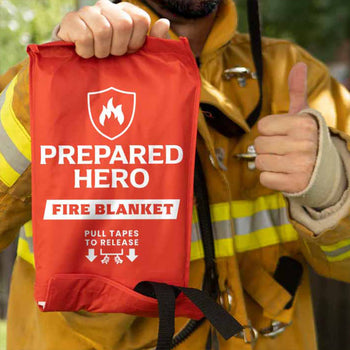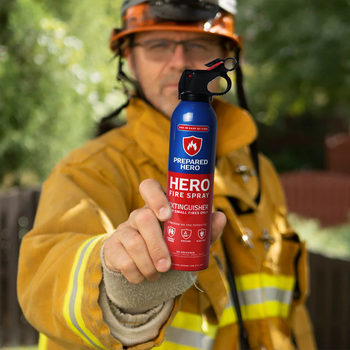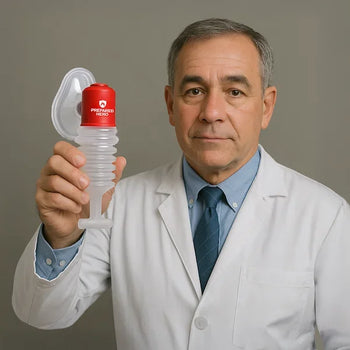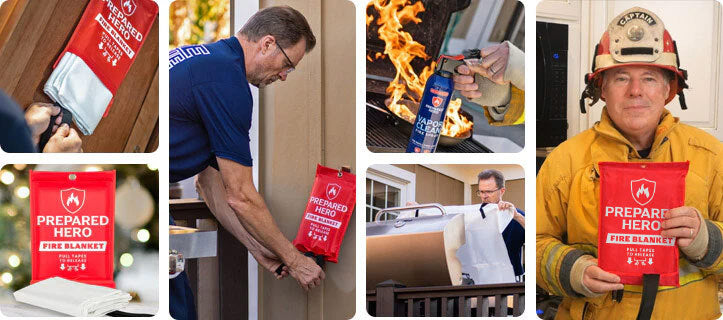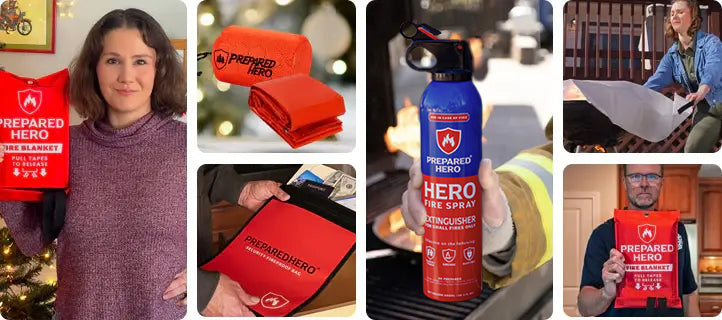Where you put your smoke detectors matters just as much as installing them. Proper placement makes sure they can detect...
Keeping your home safe from fire and carbon monoxide starts with having the right detectors. They give you the early warning you need to act quickly in an emergency. But with many features available in the market, it’s easy to get confused.
In this guide, we’ll talk about how to choose the best smoke and carbon monoxide detector, where to place it, and what experts recommend.
What Is a Smoke Detector?

A smoke detector warns you when there’s smoke in the air, which usually means there’s a fire nearby. It works by sensing smoke particles and activating an alarm so you can act fast. That includes getting everyone out, calling for help, or putting out a small fire with safety tools like a fire blanket or fire spray.
If you want reliable, easy-to-use, and affordable tools to put out small fires before they spread, check out Prepared Hero’s fire prevention tools here. You can get up to 51% off on certain items.
There are three main types of smoke detectors: photoelectric, ionization, and a combination of both. Photoelectric smoke detectors work best at spotting slow, smoldering fires that last long before bursting into flames. These include overheated wires or a cigarette burning on furniture. These detectors use a beam of light. The alarm goes off when smoke scatters the light.
On the other hand, ionization smoke detectors react best to quick, flaming fires like Class A and Class K fires. They use a tiny amount of radioactive material to ionize the air inside. When smoke interrupts that flow, the alarm gets triggered. Combination smoke detectors can detect both slow, smoky fires and fast, flaming ones. Some models even include carbon monoxide detectors for extra protection.
What Is a Carbon Monoxide Detector?
As the term suggests, a carbon monoxide (CO) detector reacts to CO. It is the most reliable way to detect carbon monoxide at home. Carbon monoxide is a gas you can’t smell, see, or taste, but it can make you sick or, in the worst cases, kill you.
CO can come from things that burn fuel, like gas stoves, furnaces, fireplaces, and cars. If these don’t burn fuel completely or aren’t vented well, CO builds up inside. Early symptoms of CO poisoning include headache, dizziness, nausea, and tiredness. They usually feel like the flu, so they’re easy to miss.
A CO detector helps by checking the amount of carbon monoxide in the air. When it reaches dangerous levels, it sets off a loud alarm so you can get outside before it’s too late. You should have at least one detector on every level of your home and near bedrooms. Find out more about carbon monoxide detector placement here. We also recommend checking how many carbon monoxide detectors you need here.
What Is a Combination Smoke and Carbon Monoxide Detector?

A combination smoke and carbon monoxide detector warns you of two dangers: fire and carbon monoxide. Smoke detectors alone can’t pick up CO, and CO detectors can’t detect smoke, so a combination unit covers both risks.
The device has two separate sensors. One detects smoke (usually with photoelectric or ionization technology) and the other detects CO (often using an electrochemical sensor). If either sensor detects a problem, the alarm sounds. Some models even tell you whether the danger is smoke or CO, so you can act quickly.
They may also have extra features like a digital CO level display and indicator lights. You can install them on ceilings or walls, just like regular smoke alarms, and they can be battery-powered, hardwired, or even smart-enabled for remote alerts.
Most last about seven to ten years, so they should be replaced after a decade at most. A combination detector also saves space, cuts down on the number of devices you need, and makes home safety simpler while giving full protection from two major hazards.
How to Choose the Best Smoke and Carbon Monoxide Detector

Choosing the right smoke and carbon monoxide (CO) detector isn’t just about picking the first one you see. It’s about finding the one that gives you the best protection for your home. Here’s how to pick the best smoke and carbon monoxide detector:
1. Check Local Rules First
Check if your state or city has specific requirements before you buy a combination smoke and carbon monoxide detector. Some places require interconnected alarms or certain sensor types. Following the rules keeps you safe and compliant.
2. Choose the Right Sensors
Ionization detectors react fast to flaming fires, while photoelectric detectors catch slow, smoldering ones. A dual-sensor model gives you both types of protection in one unit, plus a carbon monoxide detector.
3. Pick a Power Source
Hardwired models connect to your home’s wiring and usually have a backup battery. On the other hand, battery-powered units are easier to install but need regular checks. Hence, interconnected units work best for large homes, while battery-powered alarms work best for smaller spaces.
4. Look for Certifications
Only choose detectors with proper certifications. This means they’ve passed safety tests. You should also check the manufacturer's date to make sure it’s not an old unit.
5. Consider Extra Features
A digital display shows CO levels before they become dangerous. Voice alerts help wake kids, while smart models send alerts to your phone.
What Smoke Detector Do Firemen Recommend?

Firefighters and safety experts often recommend using smoke detectors that combine both ionization and photoelectric technology (also called combination or dual-sensor alarms). This is because different fire types behave differently. Ionization alarms react faster to fast-flaming fires, while photoelectric alarms are better at catching slow, smoldering ones. Having both types in one unit gives you complete protection.
They also suggest interconnected alarms, so if one detector goes off, every alarm in the house will sound. This gives you more time to act, especially if the fire starts in another room or on another floor.
Placement is important, too. The US Fire Administration advises installing alarms on every level of your home and in or near all sleeping areas. For instance, photoelectric alarms work best near kitchens or bathrooms because they’re less likely to trigger false alarms from cooking steam or shower humidity.
On the other hand, ionization smoke detectors work best at detecting flaming fires. These fires produce less smoke but more flames. So, ionization detectors are better suited for living rooms, detached or attached garages, and workshops.
Lastly, testing your alarms once a month and replacing them every 10 years makes sure they work when you need them most. Remember, a little maintenance goes a long way in keeping your home and loved ones safe.
Do You Really Need to Replace Smoke Detectors Every 10 Years?
Yes, you really do need to replace smoke detectors every 10 years, even if they look fine. Over time, the internal sensors that detect smoke start to wear out. This makes them slower to respond or unable to detect smoke at all. The 10-year mark is the industry standard for when these devices should be swapped out.
It’s not just about the battery. Even if your smoke detector still powers on, the main safety feature of the sensor won’t be as reliable after a decade. That’s why manufacturers and safety groups like the National Fire Protection Association recommend replacing them based on the manufacturer's date or when they stop working.
In short, replacing your smoke detectors every 10 years isn’t just a suggestion. It’s a key part of keeping your home safe. A working alarm can mean the difference between getting out in time or not during a structure fire. It’s a small step that has a huge impact on your safety.
Do Detectors Require Professional Installation?

Needing professional installation depends on the type you choose and what you know about basic electrical work. Battery-operated smoke detectors are the easiest to install. Most come with simple instructions, and you just need a screwdriver to mount the base and pop in the battery. Learn more about smoke detector installation here.
On the flip side, hardwired smoke detectors directly connect to your home’s electrical system. Installing them needs more technical know-how, so it’s safer to call a qualified electrician. The same goes for some carbon monoxide detectors, especially models that are hardwired. A professional can make sure they’re installed correctly and meet safety codes.
In short, you can likely install battery-powered units yourself. If it involves wiring or is part of a complex system, hiring an expert is the safest option. That way, you know it’s done right and ready to protect your home.
Where Is the Best Place to Put a Combination Smoke and Carbon Monoxide Detector?

A combination smoke and carbon monoxide detector is only as good as where you place it. Here are the best places to put your combination detectors:
1. Every Level
Have at least one combination smoke and CO detector on each floor, including the basement. This protects you and your loved ones no matter where you are in the house.
2. Protect Sleeping Areas
Install a smoke detector inside every bedroom and in the hallway outside sleeping areas. If the hallway is longer than 40 feet, put one at each end for better coverage.
3. Don’t Skip Living Spaces
Family rooms, living rooms, and other common areas should also have a detector. Fires can start anywhere, and CO can spread through the whole house.
4. Watch the Stairs
Place a detector at the top of the stairs leading to the upper floors and at the bottom of the stairs to the basement. This helps catch smoke or CO before it spreads.
5. Basement Placement
Put at least one in the basement for extra coverage.
6. Keep Away from Appliances
Stay at least 10 feet from stoves, ovens, furnaces, or fireplaces. This reduces false alarms from cooking smoke or normal appliance operation.
7. Mount at the Right Height
Smoke detectors work best on the ceiling or high on the wall, about four to 12 inches from the ceiling. For CO detection, place the unit around head height (about five feet).
8. Avoid Drafty Spots
Don’t mount detectors near windows, vents, or fans. Strong air movement can affect their accuracy.
Do I Need an Electrician to Replace Hardwired Smoke Detectors?

Yes, you need an electrician to replace hardwired smoke detectors. While swapping one out might look simple, these devices connect directly to your home’s electrical system. If the wiring isn’t done correctly, it can lead to malfunctions or fire hazards.
An electrician knows how to work the wiring safely, reducing the risk of electric fire or shock. They also make sure the detectors are installed properly, interconnected, and working the way they should. On top of that, they’re familiar with local building codes, so your installation will meet safety requirements.
Another plus is that electricians can recommend the best detectors for your home and advise on the ideal placement for coverage. In short, hiring a professional gives you peace of mind that your hard-wired smoke detectors are both safe and effective.
Where Should You Not Put a CO Detector?
You shouldn’t place a carbon monoxide detector too close to appliances that produce CO, like stoves, furnaces, or fireplaces. Maintain a distance of at least 15 feet to avoid false alarms.
Avoid humid areas, such as bathrooms, because moisture can damage the sensors. Plus, avoid placing them near windows, vents, or fans where drafts can interfere with accurate readings. Choosing the right location helps your CO detector work properly and warn you when it matters, while avoiding false alarms.
Conclusion
Smoke and carbon monoxide detectors are essential safety tools. Choosing the right type, putting them in the right places, and replacing them on schedule makes a huge difference in an emergency. Whether you install them yourself or hire a pro, the goal is the same: early warning when danger strikes. A few smart choices now can give you peace of mind and better protect your home and family. Stay safe, hero!


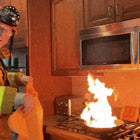 Fire
Fire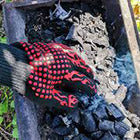 Safety
Safety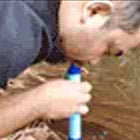 Survival
Survival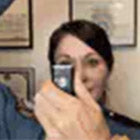 Protection
Protection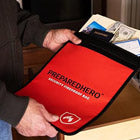 New
New
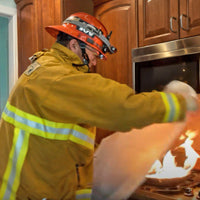 Fire
Fire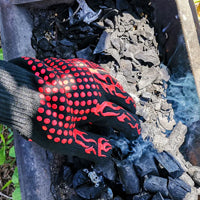 Safety
Safety Survival
Survival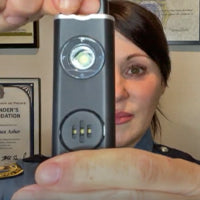 Protection
Protection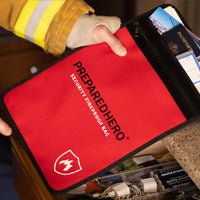 New
New
